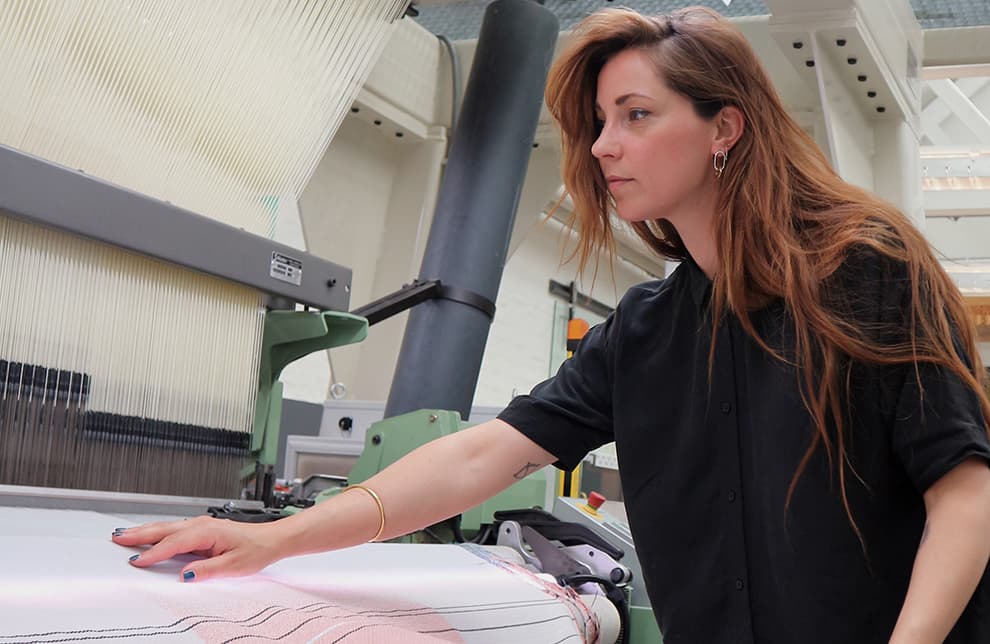Leading Dutch design on hoardings: Patterns of the World
Behind the hoardings at Schiphol, a new future for the airport is taking shape. Change and innovation are in our DNA, and we’re always looking ahead. That’s why we’re investing in better, more efficient and more sustainable business processes wherever we can. Different parts of the airport are going gas-free, circular innovations are being implemented and we’re hard at work to streamline our security and check-in processes. Because for us, it’s all about connecting your world.
Connecting barriers
Just like the airport itself, construction at Schiphol never stops. Hoardings play an important role in this: they’re the boundary between passengers travelling in comfort today and the people working to ensure the comfort of tomorrow’s passengers. But boundaries don’t have to be boring. In fact, they can offer you a glimpse into another world. That’s why we asked the talented Dutch designer Mae Engelgeer to visualise the concept of Patterns of the World on our hoardings. With Engelgeer’s designs, we want to connect the past with the present, celebrate cultural diversity and embrace connection in all its forms.

The designer speaks
Mae Engelgeer is an internationally renowned Dutch designer specialised in textile design. Exploring the limits of textile production, she uses old techniques to create modern, cutting-edge work. In her search for exciting contrasts between the materials and patterns she uses, Engelgeer creates profound textural landscapes that beg to be touched.
What inspired you in making Patterns of the World? “I often draw my inspiration from specific historical periods or certain decorative elements, and the feelings they inspire. I then translate those feelings into a stylised formal language to create patterns and new worlds, based on my own contemporary vision and personal signature.”
How is the concept of Connecting the Netherlands visualised in your work? “By travelling, you expand your world, create new experiences and connect with other cultures. With this series of works for Schiphol, I want to make people aware of that. The designs take you on a journey around the world and through history. Travelling can be stressful, but I hope that people will be able to take a moment to really absorb the patterns and reflect on the wealth of beauty that different countries and cultures have to offer.”
What patterns would you like to incorporate in your future work? “For this series, I had the whole world as an inexhaustible source of inspiration. But if I had to choose right now, I’d either go for extreme Scandinavian minimalism or bombastic Brazilian colours. I think both of those styles would lend themselves really well to my signature. But a surprising spin on a classic Dutch pattern would be fun too!”
The styles that shape and colour the world
Europe | Art deco
It’s impossible to capture Europe in one style, but art deco really wears its European roots on its sleeve. This now world-famous design style originated just before the First World War in Paris. Even though art deco’s shapes and colours are so typical of that era, they still feel modern and fresh today. Over the past century, art deco has influenced the design of everything from buildings, furniture, jewellery, fashion and vehicles down to the objects we use every day. It’s a style characterised by bold geometric shapes, bright colours and exotic details – elements that at first glance might seem conflicting, but which are united by a desire to be modern and to exude opulence and luxury.

Indonesia | Batik
The Asian batik style dates back to the 12th century and has since spread all over the world. When it comes to patterns, use of colour, technique and the quality of the finishing, the most refined batik fabrics are most likely produced in Indonesia. Over the centuries, this highly recognisable style has crossed religious, racial and cultural boundaries to become a signifier of identity to hundreds of millions of people.
